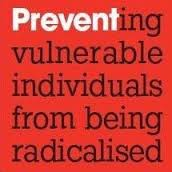By Prof Steven Greer, Professor of Human Rights, and Dr Lindsey Bell, Lecturer in Law (University of Bristol Law School).
 The Counter-Terrorism and Security Act 2015 (CTSA) has aroused great controversy by imposing a legal duty upon schools, universities, the NHS and other institutions to ‘have due regard to the need to prevent people from being drawn into terrorism’ (the ‘Prevent duty’). However, in an article published in the current issue of the academic journal Public Law, ‘Counter-Terrorist Law in British Universities: A Review of the “Prevent” Debate’, we argue that the campaign against the Act and the duty in higher education rests largely upon myths, six of which are particularly prevalent. In this blog, we provide a summary of those myths (you can also watch a short video outlining the main arguments).
The Counter-Terrorism and Security Act 2015 (CTSA) has aroused great controversy by imposing a legal duty upon schools, universities, the NHS and other institutions to ‘have due regard to the need to prevent people from being drawn into terrorism’ (the ‘Prevent duty’). However, in an article published in the current issue of the academic journal Public Law, ‘Counter-Terrorist Law in British Universities: A Review of the “Prevent” Debate’, we argue that the campaign against the Act and the duty in higher education rests largely upon myths, six of which are particularly prevalent. In this blog, we provide a summary of those myths (you can also watch a short video outlining the main arguments).
Myth 1: Prevent is racist, Islamophobic and discriminatory
In fact the Prevent duty applies to all forms of terrorism and not just the jihadi variety which, in any case, is capable of being perpetrated by people of any race. It is true that the vulnerability of most of those identified by Prevent is to Islamist terrorism. But, rather than indicating Islamophobia, this is simply an inescapable consequence of the fact that the most significant threat to the UK currently stems from this type. It would be unlawful for the Act to be used in a racist, Islamophobic or discriminatory manner and, if it were, this would be open to challenge in the courts (see below). While some Muslims oppose Prevent, there is no evidence that the majority do. Indeed 50,000 individuals and nearly 400 mosques willingly and voluntarily cooperate with it.
Myth 2: The CTSA criminalises and victimises harmless law-abiding Muslims
The Act does not criminalise anyone. On the contrary it seeks to stop people from being drawn into terrorist crime. It also operates entirely outside the criminal justice sphere and – because it applies to all forms of terrorism – it does not victimise any minority.
Myth 3: The CTSA facilitates spying upon students
There is no reliable evidence that universities are even interested in gathering security-related intelligence about students let alone engaging in it. On the contrary, the norm throughout the sector is for the Prevent duty to be managed by student welfare services and for the risk of being drawn into terrorism to be treated as a vulnerability akin to others such as suicide.
Myth 4: The CTSA requires universities to report students for the expression of radical but harmless views which may result in referral to a de-radicalisation programme
The Act legally requires universities to create and manage appropriate systems to safeguard students from being drawn into terrorism. But they cannot themselves refer anyone to a de-radicalisation programme.
Local authority Prevent panels, to which students and others may be referred, can consider de-radicalisation amongst a range of options. But this is, in fact, rarely used. In 2015-16, for example, only 381 out of a total of 7,631 Prevent referrals from all sources (5%) received support for de-radicalisation.
Nobody can lawfully be referred to a Prevent panel merely for the expression of radical or unorthodox views. There must also be evidence of a risk of harm. Furthermore, those offered de-radicalisation assistance must agree to receive it and it is not an offence to withhold consent. Nor, providing appropriate welfare systems are in place, are there any legal consequences for universities which fail to refer a student who subsequently commits a terrorist offence.
Myth 5: The CTSA jeopardises safe and supportive learning environments and has a chilling effect upon the spirit of free inquiry and open debate which lie at the heart of the university mission
There is no reliable evidence that this is happening. For example, in the more than two years the Act has been in force, not a single event is known to have been banned in an English university in the exercise of the Prevent duty. Nor is this likely because, in higher education, the duty is balanced by several other statutory obligations. These include having ‘particular regard’ for freedom of speech and to the importance of academic freedom, and not discriminating unlawfully against, harassing or victimising students, including on grounds of race, ethnicity, nationality, religion or belief.
Myth 6: The CTSA violates other basic human rights
There are very good grounds for believing the CTSA complies with the European Convention on Human Rights, incorporated into UK law by the Human Rights Act. And, as already indicated, concerns that a human right may have been violated by exercise of the Prevent duty would, in any case, be open to legal challenge where proportionality would be the key test.
In a judicial review application earlier this year, for example, the court uncompromisingly rejected a claim that being named with others in an official press release about tackling extremism in universities and colleges was unlawful and a breach of the claimant’s human rights (see Salman Butt v Secretary of State for the Home Department [2017] EWHC 1930 (Admin), discussed in a previous post).
We conclude that, while the Prevent duty would certainly benefit from fine-tuning especially as far as ‘non-violent extremism’ is concerned, the CTSA is a democratically defensible and human rights-compliant response to palpable and urgent problems.
